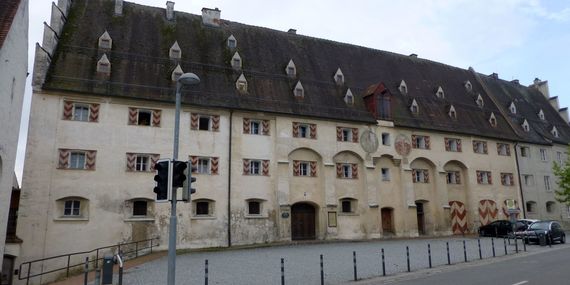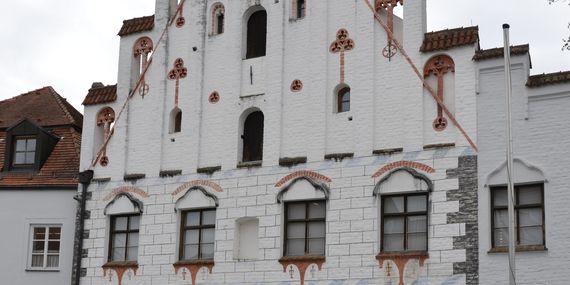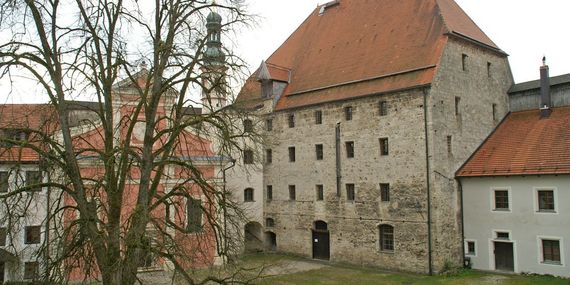Siegel (Oberhausmuseum Passau).
Copyright: Oberhausmuseum Passau
Administrative Storages
The storage of the grain levies and the administration by a representative of the respective sovereign were mostly one. The official seat and the caste therefore often formed a unit, for example at the archbishop of Salzburg’s castle of Tittmoning or the duke of Bavaria’s official seats in Dingolfing and Wasserburg.
In smaller places, the official seat and the storage can even form a structural unit, for example in the bishop of Passau’s exclave Aigen am Inn. Prince-bishop Leonhard von Laymingen (ruled 1423-1451) converted Aigen to a Hofmark with more sovereignty. His successor Ulrich von Nussdorf (ruled 1451-1479) is regarded as the builder of the administrative seat, as his coat of arms can be found above the archway on the ground floor. The storage-shaped building with its high advance wall and trench roof housed the offices of the episcopal civil servant on the ground floor, living rooms on the first floor, and grain storages in the remaining floors.



